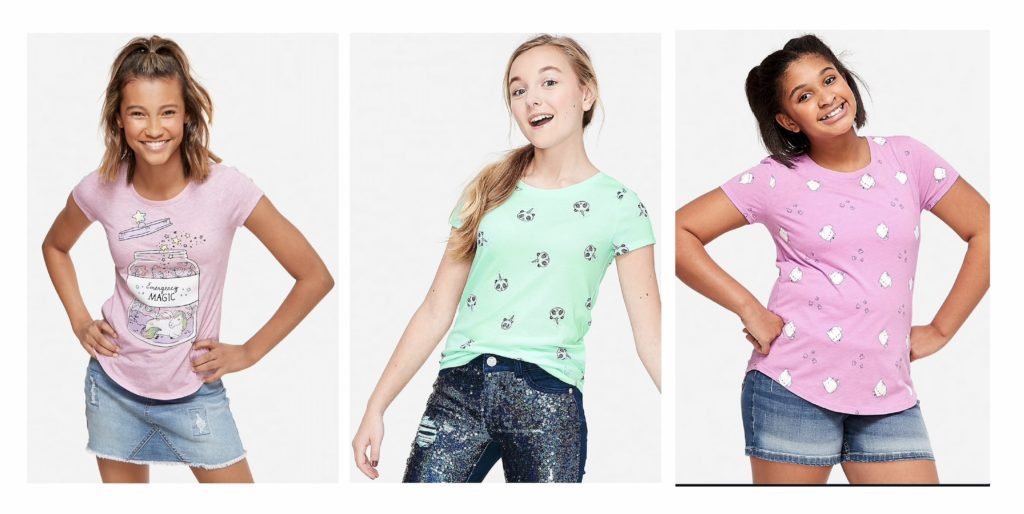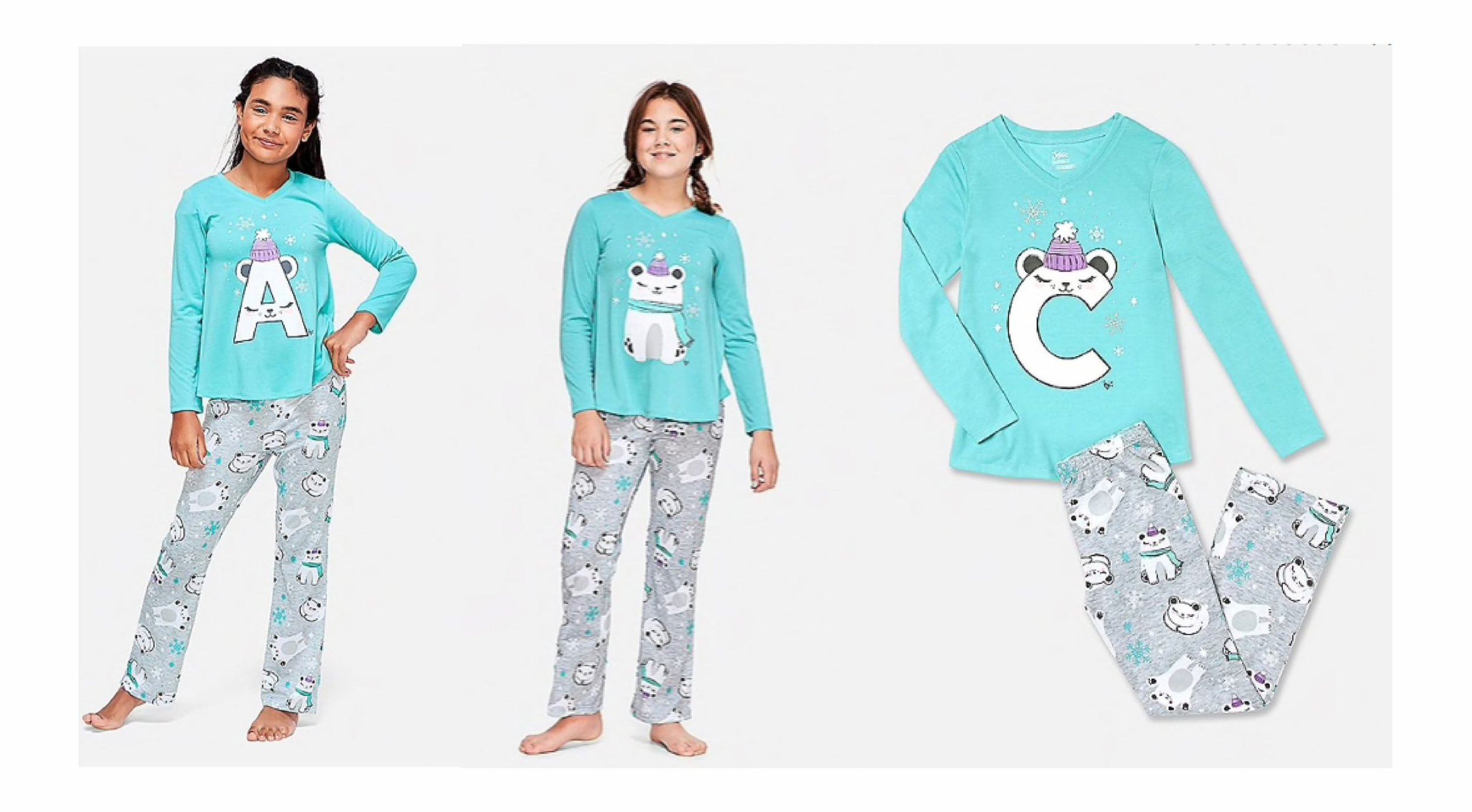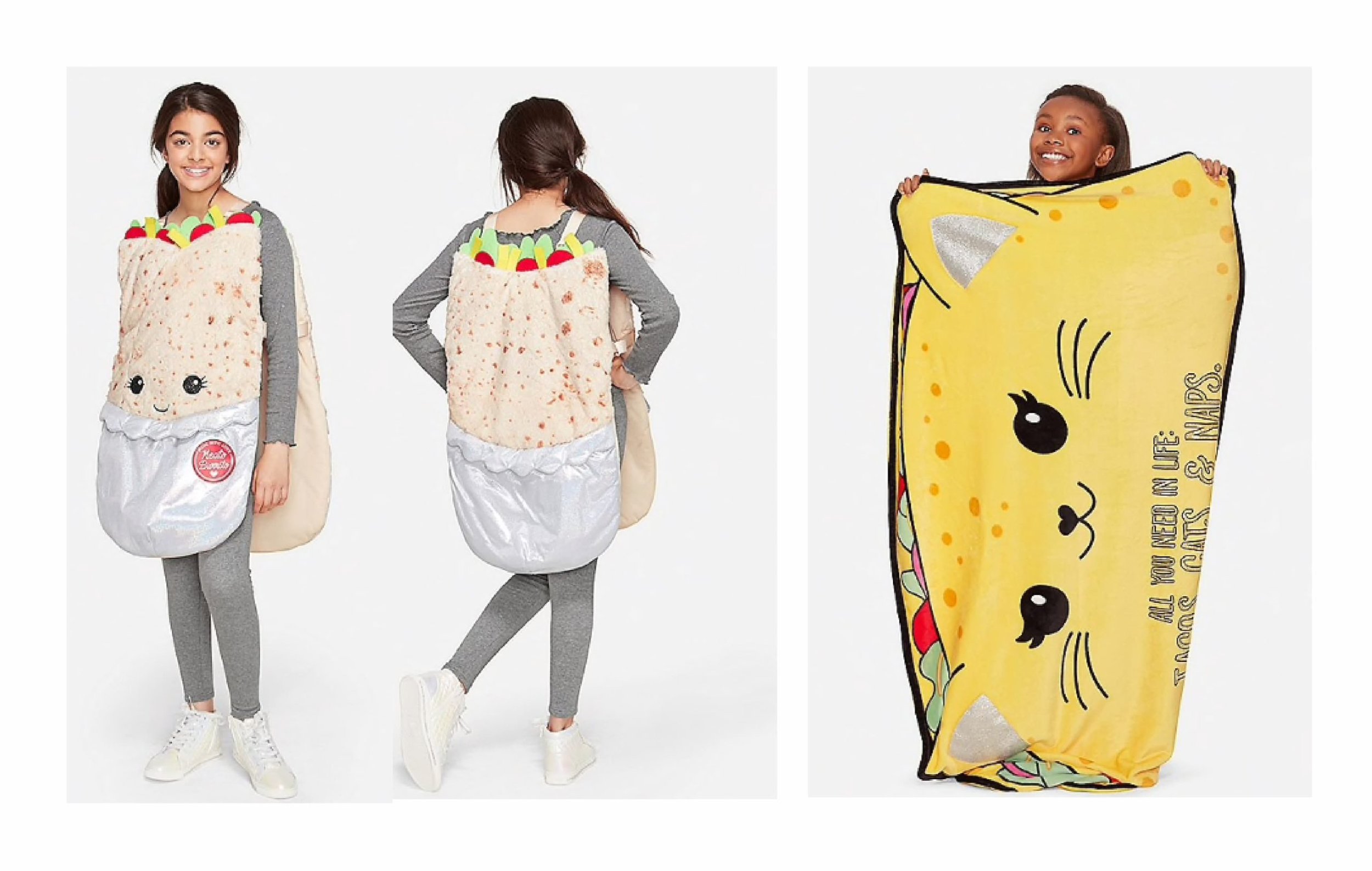3 Things I Learned as a Designer for Justice
Before the pandemic hit, I was and had been working as a designer for Justice, a tween girl's clothing and accessories brand. I worked with Justice on a variety of creative teams for 3 years doing anything from print design to apparel graphics and from product development to packaging design. While I did spend time assisting a variety of teams with pattern and graphic design, I spent the majority of my time there working closely with the Beauty department! I designed wrap labels, hangtags, and boxes for cosmetics, bath and body, nail, and self-care products.
It was a truly valuable 3 years of my career that taught me many skills that have served me as I've pursued building and running my own design studio.
Here's how my 9-5 helped me build an expert design process with high-quality work, fewer revisions, and glowing customer reviews!
Justice graphic tee design
01. What "Effective Communication" Really Means
I can't stress enough the importance of this lesson. During my years in college at the Columbus College of Art and Design, I learned how to be driven and independent in my work. My classes were all about creating art that I wanted to create, deciding when it was done, and presenting it well. These are all great skills, but when I went to go work in-house for a brand, I quickly realized that those skills had to take a back seat to a few new ones. Working for a brand allows for creative freedom, but within the confines of that brand, what it looks like, what it stands for etc. And it allows for independence but within in confines of your role as part of a larger team.
And what makes for effective teamwork? Communication!
At first, my overconfident self (I was still riding that Senior high haha) thought that I had communication mastered. I knew how to talk to people! How hard could it be? But what I thought of communication, was only part of the puzzle.
Effective communication is not just about talking, it's about listening, taking notes, asking the right questions, and being able to communicate your creative ideas to people who aren't in creative roles. It's about taking feedback, asking clarifying questions, and knowing when to go with your team member's direction rather than your own idea. Communication is not some simple thing, it's kind of an art form!
Being able to work on a team of creatives that truly valued each team member was such a blessing as I grew in this skill, because, contrary to my first impression, it wasn't always easy. However, now, I know when to update my clients, what questions to ask, and how to set expectations so my clients and I can work as a powerful team.
These skills help me help my clients
feel educated and comfortable with each stage of the design process
understand my design decisions and how they will impact their business
feel seen and heard when we communicate
set realistic expectations for the process timeline, deliverables, and process
Justice beauty Product label and packaging design
02. The Mindset that Leads to Fewer Revisions
What does mindset have to do with fewer revisions? Surprisingly, a lot.
When you're creating your work, you need to be thinking about who it's for just as much as how good it looks. The target audience at Justice was the trendsetting Tween girl who loves to express herself with what she wears. I tell you this because understanding the brand's target audience (a.k.a who you're trying to sell to) is key to creating work that hits that target on the first try.
For example, at Justice, here are some questions I'd ask myself to frame my mindset as I worked:
What colors and design style is our target audience drawn to?
What phrases would a tween girl like that her mom would also approve of?
Where will this artwork be used? (t-shirt, product label, journal, etc)
What season will the product artwork hit stores? (Back to School, Holiday, Spring, etc)
Which critter is trending more, a unicorn or a mermaid?
Sounds silly, but these were REAL questions we'd discuss when creating product designs for the Justice customer. In the same way, you can ask these questions when creating for your client's brands. By creating purposeful work, you can then explain your design decisions to your clients in a way that shows your thought process and expertise. When you and your client can look at their brand from a deeper mindset than simply what "looks good" you can move forward through the design process with fewer revisions and more confidence.
As a young designer at the time, there were also lessons to be learned on the technical side of things that led to fewer revisions as well. Let's go over those below.
Justice beauty Product label and packaging design
03. How to Deliver High-Quality Work Every Time
Let's dive into those technical things that lead to consistent high-quality work. This part is all about details. After creating work that fits your brand and target audience, you need to make sure that it's absolutely PERFECT before going to print. Large retailers like justice order thousands of units of each product when they purchase to keep costs down and to make sure all of their stores have merchandise to sell. That means the artwork needs to be in tip-top shape or else we'd end up with thousands of t-shirts or product labels with spelling mistakes, or the wrong color. During my time as Justice, attention to detail was necessary.
So here are some questions you can ask yourself to ensure high-quality work:
Are the colors correct?
Is everything spelled correctly?
Is your artwork file clean and organized enough for a complete stranger to understand it?
Are your fonts and line work outlined?
Is the artwork the correct scale?
Have you called out the dimensions?
I could go on and on, but those are the big ones. Check your work then come back later and check it again with fresh eyes. Read any copywriting out loud to check for spelling or grammar errors. This all may sound tedious, but it'll become second nature the more you practice!
Justice plush design
Key Takeaways:
Effective communication is about listening, asking the right questions, seeking understanding, and setting expectations.
When you and your client can look at their brand from a deeper mindset than simply what "looks good" you can move forward through the design process with fewer revisions and more confidence.
Deliver high-quality work without fail by making a Quality Assurance checklist
Want to Work with WildHive?
Apparel Design Gallery
Justice graphic tee design
Justice graphic tee design
Justice Sleepwear Apparel graphic and pattern design
Justice Sleepwear Apparel graphic and pattern design
Justice Sleepwear Apparel graphic and pattern design
Justice active wear pattern design
Justice active wear pattern design
Product Design Gallery
Justice plush design
Justice plush design
Justice jewelry accessories packaging carding design
Justice plush product design
Justice plush and journal design
Justice costume and taco cat blanket design
Justice plush product design
Packaging Design Gallery
Justice beauty Product label and packaging design
Justice beauty Product label and packaging design
Justice beauty Product label and packaging design
Justice beauty Product label and packaging design
Justice beauty Product label and packaging design
Justice beauty Product label and packaging design
Justice beauty Product label and packaging design
Justice beauty Product label and packaging design
Justice beauty Product label and packaging design
Justice beauty Product label and packaging design



























